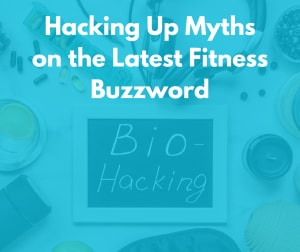
The term “biohacking” has exploded in popularity over the last few years. From podcasts to Instagram influencers, it seems like everyone is talking about how to “hack” your biology for better health, energy, and longevity. But what does biohacking actually mean—and is it really the shortcut to success that people claim? Let’s dig into what biohacking is, what it isn’t, and clear up some of the biggest myths surrounding this trend.
What Is Biohacking, Really?
At its core, biohacking is simply about making changes to your lifestyle to optimize your body and mind. This could mean anything from adjusting your diet and improving your sleep to experimenting with supplements or mindfulness techniques. While it might sound like something futuristic or tech-heavy, many forms of biohacking are just the same old healthy habits with a new name. For example, drinking enough water, exercising regularly, or eating more whole foods can all be considered “biohacks” because they positively influence how your body functions.
Myth #1: Biohacking Is All About Expensive Gadgets and Supplements
One of the most common misconceptions is that biohacking requires investing in pricey devices, high-end nootropics, or custom supplements. While some biohackers do experiment with things like wearable trackers or specialized testing, the most effective “hacks” are often free. Quality sleep, daily movement, stress management, and balanced nutrition will do far more for your overall health than any fancy gadget. You don’t need a thousand-dollar cryotherapy chamber or rare mushroom elixirs to take control of your well-being.
Myth #2: There’s a One-Size-Fits-All Hack
The idea that there’s a single trick or shortcut that will work for everyone is misleading. Your body’s needs are unique, and what works for one person might not work for you. Biohacking isn’t about following a set formula—it’s about experimenting safely and finding small changes that improve your energy, focus, or overall health. It’s also important to remember that real results come from consistent habits, not quick fixes.
Myth #3: Biohacking Is Backed by Solid Science
The word “biohacking” sounds scientific, but the truth is that many popular hacks aren’t supported by strong research. While some strategies, like intermittent fasting or cold exposure, do have studies showing potential benefits, others rely heavily on anecdotal evidence. Before you jump on the latest trend, it’s worth asking: “Is this actually proven to work, or is it just a buzzword?” A healthy dose of skepticism is essential, especially when someone is trying to sell you a product or method.
Myth #4: You Have to Go Extreme to See Results
You might see influencers taking extreme measures, like sleeping in high-tech pods or following ultra-restrictive diets, but you don’t need to take things that far. In fact, going to extremes can backfire and harm your health. True biohacking is about making small, sustainable adjustments that support your goals. Sometimes the simplest habits—like managing stress through deep breathing or improving your posture—have the biggest impact over time.
The Reality: Biohacking Is Just Lifestyle Optimization
When you strip away the hype, biohacking isn’t some secret club with exclusive tricks. It’s about being curious and proactive about your health. If you start thinking of biohacking as “paying attention to how your body responds to small changes,” it feels much less intimidating. Anyone can do it, and it doesn’t have to cost a fortune.
Final Thoughts
Biohacking can be an exciting way to explore better health, but it’s not a magic bullet. The real “hack” is consistently showing up for your body—eating well, sleeping enough, moving daily, and listening to what your body needs. Trends will come and go, but these basics are timeless.



